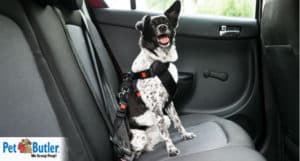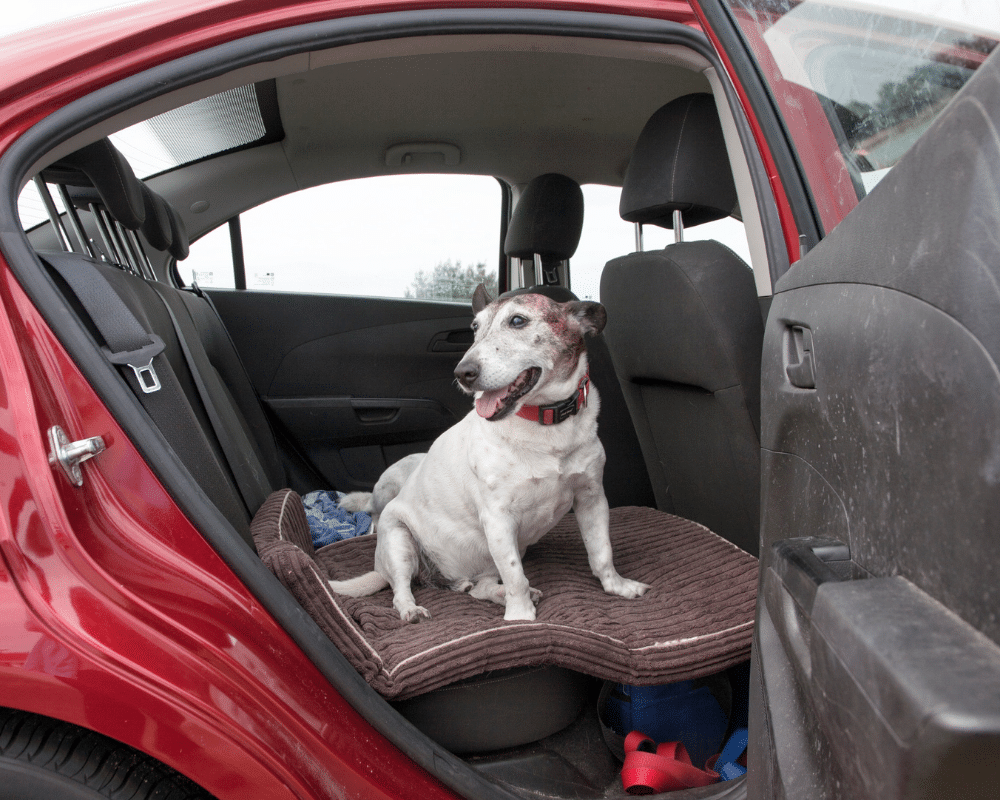Dogs in Hot Cars
Why Are Hot Cars Dangerous to Dogs?
When pets love to take car rides, it can be hard to resist their excitement when they know their owner is going for a ride. Their wagging tails and smiles that come after they hear their owners putting on shoes and grabbing the car keys are easy to give into. But when it’s summertime and the sun is scorching, it’s best to leave your furry friends at home if possible. Going from point A to point B with your pup is OK, but if you have to leave your pet in the car for even a few minutes, it can be hazardous. Leaving your pet inside a locked vehicle is an extremely dangerous practice. While a quick trip to the store is undoubtedly more fun with your furry co-pilot, it’s safest to leave them at home unless you’re headed to a pet-friendly facility.
In general, it is safe to leave your pet for 5 minutes or less when the temperature outside is between 32-70 degrees Fahrenheit. If you have to take your dog with you when running an errand, lock the car door, crack multiple windows, park your car in a shaded spot within your visual distance and make your trip fast, no more than a few minutes.
A car is essentially a heat conductor and will rise to temperatures above 115 degrees Fahrenheit within 30 minutes. Dogs can experience signs of heat exhaustion when their internal temperature rises to 103 degrees; panting, drooling, muscle tremors, abnormally colored gums, weakness or vomiting can all be signs of heat exhaustion or heatstroke.
What Do I Do if I See a Dog in a Locked Car?
If you witness an unsupervised pet in a vehicle, write down the make, model and license plate information. You can attempt to locate the owner by stopping inside the nearest business and asking for help. If the owner isn’t promptly located, the next step is to call the authorities. Many states issue fines or have other legal consequences for leaving pets in locked, unattended cars.
In our pet-centric world, it’s not difficult to find stores that welcome well-behaved, leashed pets as guests. Some even offer their visitors special treats and attention. Here is a list of most retailers to be pet-friendly and encourage their patronage: Petco, Home Depot, Lowes, Tractor Supply Co, Nordstrom, The Apple Store, Bass Pro Shops, Pottery Barn, LUSH, Orvis, Old Navy, The Gap, TJ Maxx, Petsmart, and Macy’s. Other stores and restaurants permit pets on outdoor patios. It’s a good habit to always call ahead, though, as even some pet-friendly chains have local restrictions.

Dogs on Hot Pavement
In general, the darker the road surface, the more sunshine and heat it will absorb. That makes black asphalt one of the more dangerous surfaces on which to stroll. Artificial turf also absorbs a considerable amount of heat. White concrete or grass, with the cool dirt underneath, are safer places to hike.
One good rule of paw: if it’s too hot for your hand, it’s too hot for your hound! You can test the safety of the surface by placing the backside of your hand against it. Wait 7 seconds. If your hand is uncomfortable and you need to move it away, it is too hot for your pet’s feet. For a frame of reference, an ambient temperature of 77 degrees Fahrenheit will heat the pavement to 125 degrees. At 87 degrees, it reaches a scalding 143 degrees! Ouch!
Skin destruction and burns occur at 125 degrees Fahrenheit in just 60 seconds. First-degree burns of the paw pad epidermal layer result in redness and pain but tend to resolve in a few days. Pain control and cool compresses can help soothe the affected area. Second- and third-degree burns damage more layers of the skin and subcutaneous tissue. These burns result in blistering, peeling, infection, pain and sometimes permanent loss of sensation in the affected area. They are best treated by a veterinarian and can take weeks to months to heal.
How Do I Protect My Pet’s Paws From Hot Pavement?
You can protect your dog’s feet by steering clear of midday walks, choosing safer surfaces, looking for shaded areas or providing mechanical protection for their paws like dog booties or socks.
Paw balms such as Musher’s Secret can provide a bit of a barrier from the elements while soothing dry, cracked paws. They are best to nourish feet but won’t provide complete protection your pet’s skin needs on a hot day. Rubber booties or those with a latex bottom are best outdoors. Not only do they provide traction, but the rubber soles protect delicate feet. Find a pair that fits well without causing constriction or chafing. Ideally, find booties or socks that are machine washable.
At Pet Butler, we strive to keep pets healthy whether it’s by providing guidance on how to stay safe during the summer heat or by cleaning up their waste. Learn about our poop scooping services and more.




